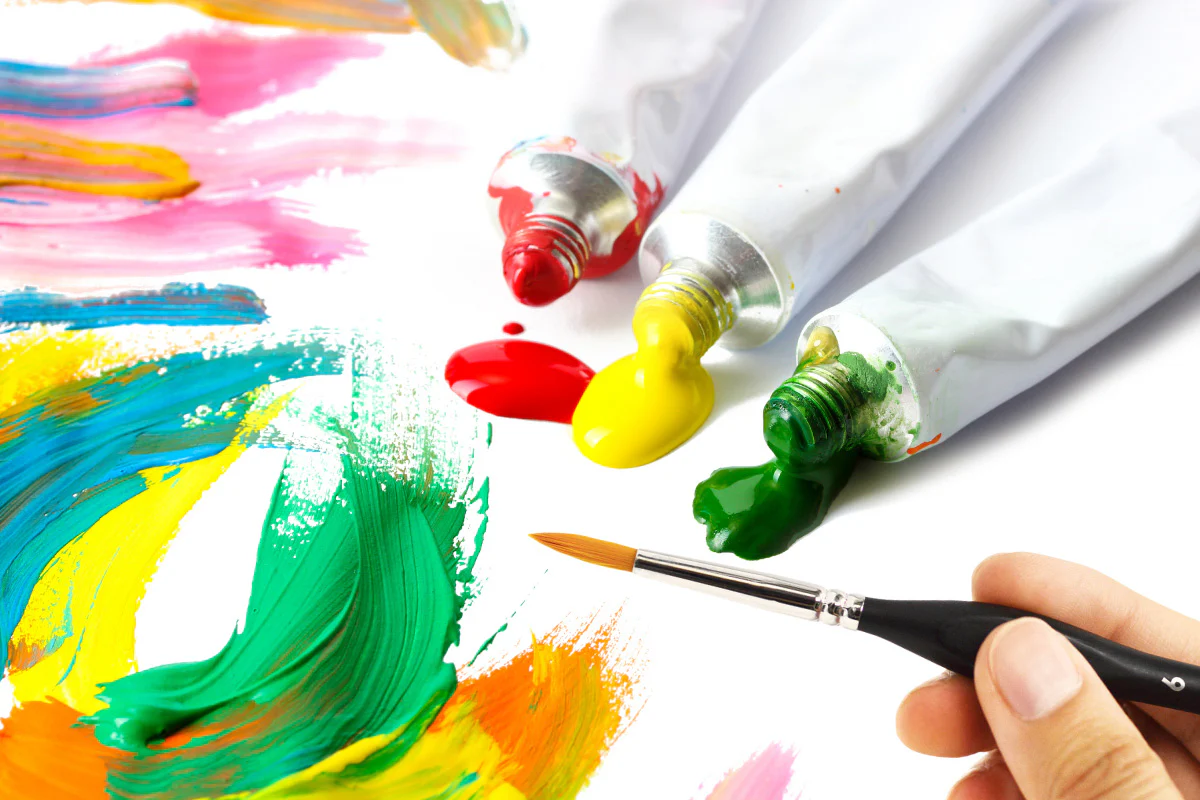Acrylic paint, with its versatility, vibrancy, and fast-drying properties, has become a favorite medium among artists of all levels. From bold brushstrokes to intricate details, acrylics offer endless possibilities for creative expression. In this blog, we’ll delve into the world of acrylic paint, exploring its characteristics, techniques, and tips for unleashing your artistic potential.
Introduction to Acrylic Paint
Acrylic paint is a water-based paint made from pigment suspended in an acrylic polymer emulsion. It dries quickly, creating a flexible and durable surface that is resistant to cracking and fading over time. Available in a wide range of colors, viscosities, and finishes, acrylics can be used on various surfaces, including canvas, paper, wood, and fabric.
Characteristics of Acrylic Paint
- Versatility: Acrylic paint can be applied thickly or thinly, diluted with water for transparent washes, or mixed with mediums for texture and effects.
- Fast-Drying: Acrylics dry quickly, allowing artists to layer colors, make corrections, and work rapidly.
- Opacity and Transparency: Acrylic paints range from opaque to translucent, offering flexibility in creating both solid forms and transparent glazes.
- Permanent: Once dry, acrylic paint forms a permanent, water-resistant film that is resistant to yellowing and fading over time.
- Cleanup: Acrylic paint can be easily cleaned up with water, making it convenient for artists to work with and maintain their materials.
Basic Techniques for Working with Acrylic Paint
- Brushwork: Use a variety of brushes to apply acrylic paint, experimenting with different shapes, sizes, and textures to achieve various effects.
- Layering: Build up layers of paint to create depth, dimension, and complexity in your artwork. Start with thin washes of color and gradually add thicker layers for detail and emphasis.
- Blending: Acrylics can be blended wet-on-wet or wet-on-dry to create smooth transitions and gradients between colors. Experiment with blending techniques using brushes, sponges, or palette knives.
- Texture: Add texture to your paintings by mixing acrylic paint with mediums such as gels, pastes, or sand. Use tools like palette knives or sponges to create raised surfaces and interesting textures.
- Mixed Media: Combine acrylic paint with other mediums such as collage, ink, or pastels to add depth, contrast, and visual interest to your artwork. Experiment with different materials and techniques to push the boundaries of your creativity.
Tips for Working with Acrylic Paint
- Keep Brushes Moist: To prevent acrylic paint from drying on your brushes, keep them moist by dipping them in water or using a spray bottle to mist them periodically.
- Work Quickly: Acrylic paint dries rapidly, so work quickly to blend colors and make adjustments before the paint sets.
- Experiment: Don’t be afraid to experiment with different techniques, materials, and approaches to discover what works best for you. Embrace the process of exploration and discovery in your artistic practice.
- Layer Wisely: Allow each layer of acrylic paint to dry completely before adding subsequent layers to avoid muddying colors and creating unwanted textures.
- Protect Surfaces: Place a protective covering on your work surface to prevent acrylic paint from staining or damaging furniture and floors. Consider using a palette paper or disposable palette for easy cleanup.
Finishing and Sealing Acrylic Paintings
Once your acrylic painting is complete, consider applying a varnish or sealer to protect the surface and enhance the colors. Acrylic varnishes come in various finishes, including matte, satin, and gloss, and can be applied with a brush or spray for a durable and professional-looking finish. Allow your painting to dry completely before varnishing, and follow the manufacturer’s instructions for best results.
Exploring Acrylic Painting Styles and Artists
Acrylic paint lends itself to a wide range of artistic styles, from abstract expressionism to photorealism and everything in between. Explore different styles and techniques by studying the work of renowned acrylic painters such as:
- Gerhard Richter: Known for his abstract and photorealistic paintings, Richter’s work explores themes of memory, history, and perception.
- Judy Chicago: A pioneer of feminist art, Chicago’s vibrant acrylic paintings and installations celebrate women’s experiences and contributions to art and society.
- Wayne Thiebaud: Famous for his colorful and whimsical paintings of everyday objects and landscapes. Thiebaud’s work captures the essence of American life and culture.
Conclusion
Acrylic paint offers artists a versatile and accessible medium for unleashing their creativity and bringing their artistic visions to life. Whether you’re a beginner exploring the basics or an experienced artist pushing the boundaries of your craft. Acrylic paint invites you to experiment, innovate, and express yourself in bold and vibrant ways. Embrace the possibilities of acrylic painting, and let your imagination soar as you embark on your artistic journey with this versatile and dynamic medium.




